The show will go on for arts interns [updated]
March 23, 2010
The county’s on-again, off-again summer arts internship program is on again.
And not a moment too soon for local arts organizations scrambling to fill spots that have been in limbo since a proposal to fund the program out of county reserves first went before the Board of Supervisors on March 2.
Since then, members of the board have suggested tapping the civic arts program for funding, debated loaning the arts commission money for this summer’s internships, and sharply questioned whether the commission had done enough to raise money from outside sources or had fully explored drawing on Temporary Assistance for Needy Families (TANF) welfare funding to give jobless single mothers a chance to take part.
The board voted 3-0 to approve a motion by Supervisor Mark Ridley-Thomas, seconded by Supervisor Zev Yaroslavsky, to spend $250,000 in county reserves to make a go of this summer’s paid internship program. Also voting in favor of the motion was Supervisor Michael D. Antonovich. Supervisor Don Knabe abstained, and Chair Gloria Molina—the board’s most ardent advocate of the TANF option—voted “no, with attitude.”
After the vote, the arts commission started spreading the word to intern-seeking organizations. Some had been calling anxiously in recent weeks to inquire about the program’s future.
“Fantastic!” said Elise Dewsberry, artistic director of the Academy for New Musical Theatre in North Hollywood, when she learned of the board’s vote to keep the program afloat for another summer. Dewsberry said last summer’s intern was a whiz at social networking and showed the organization how to create inexpensive, effective advertising campaigns on Facebook.
“We got a lot of people clicking through to our website,” she said.
The Virginia Avenue Project, which runs an after-school arts program for students in Santa Monica and Los Angeles schools, also has been hoping to land another intern this summer.
“I wouldn’t have the job I have now without the opportunity to show the organization how we would work together,” said Simon Hanna, a former summer arts intern who is now Virginia Avenue’s director of development. “I think it’s a stellar program.”
The stripped-down internship program will put 75 college undergrads to work this summer, down from about 120 the year before. The program’s funding–$500,000 last year–was cut in half, with concessions and contributions required from participating arts organizations. In the end, the money came from the county’s “provisional financing uses” account, the same funding source proposed when the matter first came before the board.
“We’re going to implement this as if it was shot from a cannon,” Laura Zucker, executive director of the Arts Commission, said after the meeting. “We’re all grappling with what the budget’s going to look like for next year. I greatly appreciate the board’s providing the support to continue, even in this reduced form.”
Posted 3/23/10
Updated 3/25/10:
Nonprofit arts organizations interested in taking part in this summer’s internship program have until April 7 to apply. Complete information is here.
Updated 4/28/2010:
There’s still time to apply for a summer arts internship. College students can find out about available positions and get program information here.
County gets ready for long-awaited anti-gang programs
March 18, 2010
It’s been three years in the crafting, but this week the Board of Supervisors will consider final approval for the County’s Regional Gang Violence Reduction Initiative, a plan to test-drive a new and comprehensive prevention and suppression program in four pilot sites around the County, including Pacoima in the Third District.
The $1.9 million program recognizes that any successful anti-gang effort needs to address both root causes at the front end, including community and family dysfunction, as well as aggressive and coordinated law enforcement strategies at the back end.
The plan will offer enhanced park, library, health clinic and school-based services for at-risk youth and their families to provide positive and constructive outlets and opportunities. It will also address the challenges of assisting formerly incarcerated youth and adult probationers to rejoin their communities as productive and law-abiding citizens with job skills and employment prospects. Finally, it will employ a multi-pronged suppression effort that involves targeting known hot spots and the most violent offenders, a high-profile law enforcement presence around parks and schools, and greater information sharing among various public agencies.
In addition to Pacoima, the other pilot sites include Florence/Firestone, Monrovia/Duarte and Harbor/Gateway.
Posted 3/17/10
Metro beer and wine ad proposal falls flat
March 18, 2010
The beer that made Milwaukee famous won’t be riding L.A. public transportation any time soon.
After a discussion liberally spiked with references to Schlitz—and even, briefly, to Blatz—a Metropolitan Transportation Authority committee voted unanimously today to reject a proposal that would have allowed beer and wine ads on the agency’s buses and trains.
Metro’s communications staff told the committee that accepting beer and wine ads could yield $500,000 a year for the agency in a 50-50 split with its advertising vendor, CBS Outdoor.
A number of big city transit agencies, including New York’s MTA, permit such advertising, but Metro would have been the first to do so in California—a distinction none of the committee members seemed eager to claim.
“For the amount of money you’re talking about, for us to be the first in California to advertise alcoholic beverages on our buses rubs me the wrong way,” said Supervisor Zev Yaroslavsky, a Metro director and member of its Executive Management and Audit Committee.
Yaroslavsky also questioned whether the revenue split was in the agency’s best interests.
Another member of the committee, Richard Katz, said he shared those concerns and suggested there were better ways to bridge a $181 million deficit in the coming fiscal year.
“I’d much rather explore naming rights at station locations and things like that to generate revenue before I’d put alcohol on buses,” Katz said.
“Schlitz station?” Yaroslavsky quipped.
“That would be the old abandoned station, yeah, that would be the Schlitz station,” Katz parried back.
Committee chair Ara Najarian said he had “personal objections to alcohol advertising.”
“I think much of it nationally is targeted to minority groups,” he said. “I think it encourages a behavior that is not productive, during certain hours of the day at least. And I don’t think we can regulate the content.”
“If we said we would permit Schlitz to endorse a message such as ‘Drink responsibly, let Metro be your designated driver,’ we can’t restrict to that,” Najarian said.
Metro adopted its policy banning alcohol and tobacco ads in 1997, at the behest of then-Supervisor Yvonne Brathwaite Burke, who said it was a matter of good public health policy. Subway riders interviewed this week seemed split on whether it was appropriate to make an exception for beer and wine ads. (See our earlier story here.)
But among the Metro committee members, the feeling was unanimous: current policy should stand.
It seemed for a moment that the committee’s vice-chair, Supervisor Don Knabe, would have the last word on the matter:
“A half a million bucks is not worth the heartache, trust me,” Knabe said.
Then Yaroslavsky offered this: “Can we get some money from Schlitz, just for having brought their name up?”
Posted 3/18/10
Testing for toxics at the Marina
March 18, 2010
It’s the largest man-made small-boat harbor in the United States—and it’s about to see the launch of a new project to measure toxic pollution.
The harbor at Marina del Rey is home to over 4,000 motor craft and sailboats. Built on former wetlands at the mouth of Ballona Creek by the Army Corps of Engineers, the Marina opened in the summer of 1965.
Hotels, condos, parks and restaurants sprang up around the giant marina on county unincorporated land. Beyond the Chris-Crafts and cruising yawls, the marina boasts a sandy “Mother’s Beach” that’s a favorite for wading and swimming because it’s protected from the ocean’s waves.
But the marina also has a history of elevated levels of five toxic substances, landing the man-made harbor on a list of “impaired” waterways under the federal Clean Water Act, along with thousands of polluted lakes, rivers, harbors and estuaries around the nation.
As a key preliminary step to a cleanup, the Board of Supervisors approved a plan this week to team up with the City of Los Angeles and Culver City to pay for a three-year, $4.5 million monitoring regimen for the toxics in waters and sediments of the harbor and in the storm water drains that flow into the marina.
“The first three years we’ll develop a baseline to find out what the levels [of the pollutants] are currently,” said Oliver Galang, a senior civil engineer at the Department of Public Works, who will head up the toxics monitoring project.
Galang’s team will then guide the formation of a cleanup plan for any toxics that remain unacceptably high. The aim is to bring all inflows of the toxics under acceptable levels for swimming and other recreational uses by 2016.
By July, Galang hopes to get monitoring underway in the man-made 2.9 square mile watershed that includes the Marina, parts of Venice and a small slice of Culver City.
Three of the toxics found in elevated levels are metals: copper, lead and zinc. Galang says that they come largely from automobile brake pads that shed minute amounts of copper and zinc onto the streets, where they are flushed into the storm drains and into the water. The lead sources may range from discarded industrial supplies, batteries or residues washed from old lead-based paint, he says.
Also to be measured are two long-banned organic compounds found in harbor sediments in the 1990s. Chlordane was a pesticide sold until the early 1980s; PCBs, or polychlorinated biphenyls, were found in paints, plastics and electrical equipment until 1979.
Past monitoring showed that the bulk of the toxics sat in mucky sediments at the harbor’s bottom, not suspended in the water itself. County health officials say they can’t make a definitive statement on the presence of the toxics and any potential health issues without further data.
Once underway, data technicians will take monthly water samples in the harbor and in the storm drains as well as analyze chemicals in sediments beneath the harbor. Divers will capture fish and mussels to check for buildup of toxics in the animals’ tissue. They’ll also gather and analyze water during winter storms.
Most of the toxic pollutants found in the past lurked in the sediments of the back basin, the inland edge of the harbor.
“The back basin doesn’t have a lot of water circulation,” Galang said “The tide doesn’t flush it out very well.”
The toxics plan is the second pollution fix to be undertaken at the harbor. An earlier plan aims to cut levels of harmful bacteria, but it ran into trouble when state regulators reported last month that bacterial counts exceeded limits 186 times between 2007 and 2009.
In February, the state’s Regional Water Quality Control Board staff proposed levying nearly $275,000 in civil administrative fines against the county’s Flood Control District, which built diversions to carry water to sewage treatment. In its complaint, the state held that the district alone was responsible for the high bacteria counts—but not the city of L.A., where the dirty water originated.
Public Works officials have called the proposed fines “irresponsible and counterproductive” and asked the state to “rethink” them. The full Regional Water Quality Control Board will consider the fines at their May meeting.
The county Department of Public Health closely monitors the presence of harmful bacteria in the waters. Public warnings about bacterial counts were reduced significantly when the county recently installed underwater propellers to improve circulation along the marina beachfront, said Beaches and Harbors Department Director Santos Kreimann.
On the toxics plan, the county’s Galang said the upcoming measurements will help water specialists to fashion solutions that the county and its partners will present to the state regulators next spring.
3/18/10
Keep on truckin’ on bike and on foot. And in taxis?
March 18, 2010
If the people behind the 2010 LA Street Summit have their way, four wheels would become two.
Or none at all.
Scheduled for Saturday, March 20 at Los Angeles Trade Technical College, near downtown L.A., this year’s meeting broadens the discussion from an earlier bike summit to include mass transit, walking and even taxicabs. The Urban Environmental and Policy Institute of Occidental College, the summit’s creator, hopes the gathering will spark enthusiasm for the growth of “green and community based” styles of transportation.
“We’ve got a system weighed heavily in favor of automobiles,” said Joe Linton, program associate for the UEPI and an avid cyclist. “For Los Angeles to have a healthy environment and a lessened environmental impact, we need to give people other options.”
The summit kicks off Thursday, March 18 at 7:30 p.m. in Occidental College’s Keck Theater with a lecture on energy and the environment by Janette Sadik-Khan, Commissioner of Transportation for New York City, which rolled out 200 miles of new bike lanes in the past three years.
Saturday’s programs will be interactive and geared towards a broader community of alternative transportation enthusiasts. Workshop discussions include street-ready topics such as:
* “How Free Parking Gets in the Way of Building Livable Cities” by increasing car congestion and discouraging alternative transportation
* “Subverting Urban Planning” through increasing the number of parks with more places to sit, along with other people-friendly features
* “What the Hell is Going on in Long Beach?” (Partial answer: new bike lanes and shared bike-car-bus lanes)
The summit starts at 10:00 am and goes through 5:00 pm. Admission is free.
The event will also feature artwork by local artists and food from street vendors.
“The fact that this year has been expanded [beyond bikes] is a major leap forward,” said Allison Mannos, Urban Programs Coordinator for the Los Angeles County Bike Coalition. “It’s pretty revolutionary.”
Skirball hosts RFK’s “Journey to Justice” this week
March 18, 2010
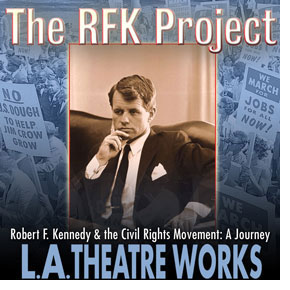 It was among the briefest reigns in pop culture history, but the Golden Age of Radio spanned barely 25 years between the late 1920s and the mid-1950s, when the advent of commercial television rang down the curtain on radio’s theatre of the mind. Future generations of listeners largely lost their opportunity to savor the pleasures of the audio art form. But since 1974, radio drama has been alive and well in Los Angeles thanks to L.A. Theatre Works, a performing arts organization established to produce, promote and preserve radio dramas for entertainment and education.
It was among the briefest reigns in pop culture history, but the Golden Age of Radio spanned barely 25 years between the late 1920s and the mid-1950s, when the advent of commercial television rang down the curtain on radio’s theatre of the mind. Future generations of listeners largely lost their opportunity to savor the pleasures of the audio art form. But since 1974, radio drama has been alive and well in Los Angeles thanks to L.A. Theatre Works, a performing arts organization established to produce, promote and preserve radio dramas for entertainment and education.
LATW produces ten new radio plays a year, performing and recording them in front of a live audience at the Skirball Cultural Center in Brentwood for later airing on its nationally syndicated radio series, which airs locally in Southern California on 89.3 KPCC every Saturday from 10 pm – midnight. The programs can also be heard as free streaming audio, borrowed from public libraries and purchased on CD or as audio downloads.
This week, L.A. Theatre Works premiers its latest work, “RFK: Journey to Justice,” a new docudrama chronicling Robert Kennedy’s personal and political odyssey through America’s tumultuous civil rights era of the early 1960s. His story offers a compelling narrative of his evolution from conventional political animal into an inspiring leader in pursuit of a higher cause.
The Skirball live performances are now running through Sunday, March 21, 2010 weekday evenings at 8 p.m., with a Saturday matinee at 2:30 p.m. and Sunday matinee at 4:00 p.m., at ticket prices ranging from $20-$48. For further information, call
(310) 827-0889.
Posted 3/18/10
A fabled route for the long run
March 17, 2010
Sunday’s L.A. Marathon will blaze a new trail across the city, racing past some of the most storied real estate on the planet—Dodger Stadium, El Pueblo de Los Angeles, Hollywood & Vine, Grauman’s Chinese Theater, the Sunset Strip, Rodeo Drive.
But to L.A.’s running cognoscenti, all that might as well be the low-rent district compared to the race’s closing stretch: San Vicente Boulevard to the ocean.
“A mecca,” says Gabriel Valenzuela, who has been running San Vicente for 25 of his 65 years. “It’s the pinnacle.”
Despite its legendary status among local runners, this slice of workout paradise, with its coral tree-studded center islands and easy-on-the-knees grass, is only now making its L.A. Marathon debut. With a sell-out crowd of 25,000 marathoners registered to take part this year, the allure of San Vicente—never a particularly well-guarded secret among the Westside’s fit and fabulous—is about to be shared with the world in a big way.
So you could forgive these running regulars for feeling a twinge of locals-only resentment at the coming invasion. But (and maybe this was just the endorphins talking) nearly everyone interviewed on a recent Saturday morning starts by saying the same thing: “I think it’s great!”
Or this, from Ken Carlson, running with his wife, Katrina, near the intersection of San Vicente and 7th Street in Santa Monica: “Bring it on! Civic pride!”.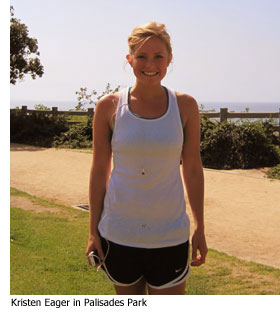
In addition to providing an injection of that feel-good civic pride, the 26.2-mile marathon is guaranteed to deliver its share of you-can’t-get-there-from-here moments, so be prepared. Metro is warning of bus service disruptions in areas traversed by the route, and urging spectators to take the train to marathon viewing points. That information is here. Motorists, too, should check out street closures.
The 25th annual marathon, with its “Stadium to the Sea” route, also will force some alterations in long-cherished workout routines. “Every Saturday and Sunday, I drive out to Santa Monica to run” along San Vicente, says Jack Rosenfeld, 30, of Culver City. Not this Sunday. “I’ll be watching on TV, probably,” he says. (KTLA Channel 5 will be televising the marathon from 7 a.m. till 10 a.m. Sunday.)
For runners, the stretch brings together an almost magical combination of factors. Good air. A nice downhill grade toward the ocean. The grassy median. Those coral trees—gnarly roots notwithstanding. And long stretches uninterrupted by cross traffic.
“Everybody from the Westside who works out regularly knows this stretch,” says Mark Stofko of Hollywood, pausing briefly at the 7th Street light with fellow runner Andreas Deptolla.
San Vicente is the stuff of local legend in other ways, too. A 1980 Los Angeles city ordinance designated the Brentwood stretch a scenic corridor and created one of the city’s pioneering “specific plans” to protect and preserve the neighborhood’s character by limiting the scale of development.
The coral trees themselves, planted in the 1940s along what was once the Red Car corridor, were designated a city historic-cultural monument in 1976.
The “Kaffirbloom corals”—Los Angeles’ official trees—have endured various threats over the years, including a time in 1995 when 11 had to be chopped down, and dozens more appeared to be in danger, because of top-heaviness, according to the Los Angeles Times. (The problem was resolved by giving the luxuriant Brentwood trees a buzz cut.)
More well known than the boulevard’s running culture, at least for a time, was its role as a geographical footnote during the O.J. Simpson murder case. The restaurant Mezzaluna—where Nicole Simpson dined before she was murdered and where Ronald Goldman, also slain, was a waiter—was located on San Vicente. Now it’s a Peet’s Coffee & Tea—a popular stop for local runners and, even more, for the bicyclists who share the boulevard with them.
The 4.03-mile stretch of San Vicente that the marathoners will be pounding Sunday is part of a new route that, for the first time, will go through cities in addition to Los Angeles, including West Hollywood, Beverly Hills and Santa Monica. The Santa Monica City Council’s approval was essential to making San Vicente the race’s portal to the Pacific. More than 3,000 people signed an online petition urging the council’s OK last summer.
The new route—along with the race’s new management under Frank McCourt, owner of the Dodgers—helped make this year’s race a sellout for the first time ever, according to Rich Perelman, spokesman for the event.
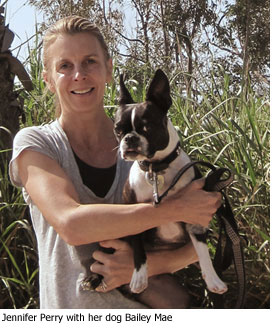 It certainly made a difference to Jennifer Perry.
It certainly made a difference to Jennifer Perry.
Perry, executive director of the nonprofit Children’s Action Network, is a San Vicente regular who’s previously run marathons in New York, Paris and London—but not here at home, until now.
“The only reason I’m running is because they changed the route,” she says. (Another factor: her 50th birthday is Sunday, so why not?)
She hasn’t practiced running the overall new route—“I prefer to be surprised”—but seems delighted that she’ll be passing some personal landmarks along the way.
“I can stop at my coffee place,” Perry says. “It’s at Mile 22.”
At Palisades Park, where San Vicente meets Ocean Avenue, Perry and her sometime running companion, a two-year-old Boston terrier named Bailey Mae, are having a laid-back stroll Saturday morning, the heavy-duty marathon prep completed. It’s choice spot to kick back and take stock.
“To me,” Perry says, “this view of the ocean epitomizes L.A. It epitomizes why we live here.”
Nearby, Kristen Eager, a 21-year-old UCLA math major, is finishing her post-run stretching near the base of San Vicente, the Pacific sparkling behind her in the distance
“We should be showing this off for the marathon,” Eager says. “It’s beautiful.”
This ad’s for you, if Metro shifts gears
March 17, 2010
It’s been 13 years since they dimmed the lights and sounded last call for beer and wine advertising on local buses and trains.
Now those ads could be on tap again.
A proposal to bring back such advertising goes before a Metropolitan Transportation Authority committee this week. The idea has surfaced as Metro faces a $181 million deficit—and likely staff cuts and service reductions–in the coming fiscal year that begins in July.
CBS Outdoor, Metro’s advertising vendor, said it would split the revenue generated by the new beer and wine advertising with the agency, generating about $500,000 a year for Metro, according to the report to be considered by the Executive Management and Audit Committee on Thursday. That amount would be on top of Metro’s revenue from other CBS Outdoor advertising, which is set at a flat fee of $27.9 million in the coming fiscal year.
Ads for tobacco and other alcoholic beverages would remain off-limits.
Warren Morse, Metro’s deputy executive officer for communications, said the idea of reinstating beer and wine advertising originated with CBS Outdoor and was being presented to the committee as one possible revenue-generating option.
“We didn’t bring this up to be controversial,” he said. Morse said that the cities of Los Angeles, West Hollywood and Inglewood allow beer and wine advertising on bus shelters in their areas, which account for 85% of the shelters in the county.
Metro banned tobacco and alcohol advertising on its vehicles in April, 1997, on a motion by then-Supervisor Yvonne Brathwaite Burke, who was also on the Metro board of directors at the time. (The current policy is here. )
Burke, who retired in 2008, said in an interview that she had introduced the motion as a matter of good health policy. She said public transportation passengers are a captive audience, and alcoholics, in particular, could be placed in a difficult situation if they are unable to avoid seeing such ads.
“You have an audience that is almost kidnapped,” Burke said. “I just wonder how much money is going to be generated to make it worth it.”
Metro riders interviewed this week seemed divided on whether beer and wine ads should be allowed to share their afternoon commute.
“I don’t want to see it,” said Red Line subway passenger Joe Barry. “There is already enough exposure. I don’t see why it has to be featured down here as well.”
“I don’t need to have it in my face every minute of the day,” added Paul Donaldson, another Red Line rider. “I can get that enough from TV.”
But Avis Jackson, riding the Purple Line, said, “It doesn’t matter because the advertising is everywhere else and is so overexposed.”
Added Michael Paz, waiting to board the Purple Line: “It’s fine with me if it creates some money for the city.”
CBS Outdoor senior vice president Rich Ament said the change makes financial sense. He said beer and wine advertising represents a “serious opportunity” for Metro to receive revenue from what is “essentially a recession-proof product.”
“Beer and wine advertising is everywhere,” Ament said. “The only place it doesn’t exist is on the (L.A.) transit system… It exists pretty much everywhere else.”
New York’s Metropolitan Transportation Authority is among the big city transit systems that allow such advertising. But San Francisco’s does not.
“Tobacco and alcohol advertising are seen as not appropriate on public transportation vehicles that are publicly funded,” said Murray Bond, deputy director for communications at San Francisco’s Municipal Transportation Agency.
Posted 3/17/10
A veterans residence worth waiting for
March 11, 2010
Steve Rosmarin pushed for 20 years to get a state long term care home for veterans built in West Los Angeles.
Now that it’s finally scheduled to open this summer, he’d love to be among the first to move in.
Rosmarin, a retired stockbroker and travel agent, is a very unretiring veterans’ activist. At 82, he’s twice been state commander of the Jewish War Veterans, once in the early 1960s and again in 2007-8. Since 1999, he’s served on the county’s Veterans Advisory Commission.
Not a bad achievement for a one-time private first class who served in Korea in the early days of the Cold War, hunting for Japanese holdouts and worrying about the Russians north of the 38th parallel. The slight teen carried a BAR, a Browning Automatic Rifle, a powerful weapon that weighed more than 18 pounds. “They liked to give the short guys the big weapons,” he explains.
As a veterans’ advocate, he has long pushed for advances in education, health care and housing for former military personnel in the Los Angeles area. The housing issue became important to him as he watched as veterans of World War II, Korea and, more recently, Vietnam hit retirement age, and face scarce housing options on fixed incomes.
“We have so many veterans here that are aged and in need of housing and care,” he says. “We needed to do something.”
In the late ‘80s, Rosmarin and other advocates figured the best solution was building a state veterans home in L.A, now home to about 400,000 vets. At the time, there was just one state retirement residence for vets operated by the California Department of Veterans Affairs, a large home in the Napa Valley community of Yountville – hundreds of miles away. In the ‘90s, two new state homes were built, but neither was close to Los Angeles, with its large veteran population.
He lobbied members of Congress, veterans’ officials and Sacramento lawmakers to locate a facility on the federal Veterans Affairs campus in Westwood. The area had spare land and proximity to the veterans hospital and the UCLA Medical Center. And, after all, the VA campus had started in the 1880s as the Sawtelle Veterans Home for disabled military men. Locating a facility there meant the vets could more easily stay connected to family and friends.
Their campaign got a big boost when federal Veterans Affairs officials declared California one of two states “in great need” for veterans’ housing and required new homes to be built in areas with high concentrations of veterans. The state passed bond funding between 2000 and 2004, and a building plan emerged to construct five new state homes with both state and federal funds—three of them in Los Angeles and Ventura counties.
Rosmarin’s key role was evident at the 2007 groundbreaking, when he got the call to introduce Gov. Arnold Schwarzenegger.
The 396-bed Veterans Home of California–West Los Angeles facility will open this summer. The $187- million home will include a residential care wing as well a skilled nursing facility and a “memory care unit” for vets with Alzheimer’s or dementia. Two other smaller Southern California facilities–60-unit residences in Lancaster and Ventura–also opened in recent months.
When the application period began last month for the West L.A. home, Rosmarin, who until recently had been living on his own in the San Fernando Valley, quickly put himself in the running. He wants to be closer to his two daughters and his L.A.-area roots in Sherman Oaks and West Hollywood. He moved into the new state veterans’ home in Lancaster in the past few weeks—temporarily, he hopes. Widowed three years ago, Rosmarin had wanted to wait until the West L.A. facility opened to make the move, but he had to make the jump early when his doctor recently told him that his health and medication issues meant that he should no longer be living alone.
He’s not the only one interested. More than 700 veterans have requested applications to the West L.A. facility, according to spokeswoman Jeanne Bonfilio. Veterans must be California residents, 62 or older and honorably discharged. Disabled vets can be younger. The rent covers room, board and all services. Rates vary, ranging from 55 to 70 % of a veteran’s income, depending on the level of care in the facility.
After getting a taste of living in a state home, Rosmarin is an even bigger booster, touting them as clean, well-operated alternatives to costly private sector facilities. “I’ve visited several [private facilities], and you always get the smell of hospitals and the smell of other things,” he says, speaking by phone from what he hopes will be his temporary bivouac in Lancaster. “Here it smells spotless. It’s a great thing to see.”




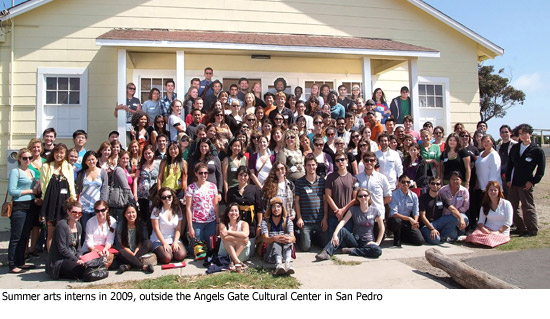
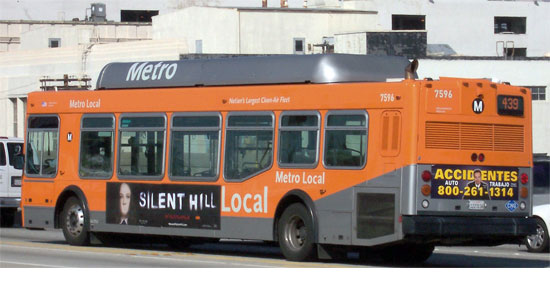

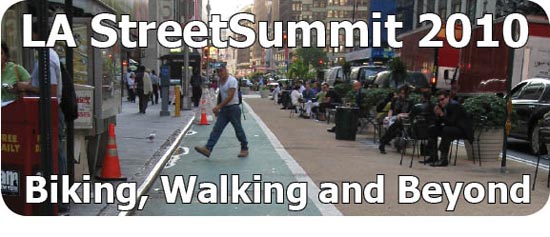
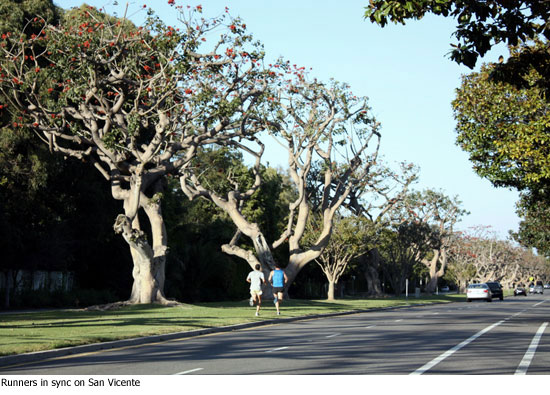

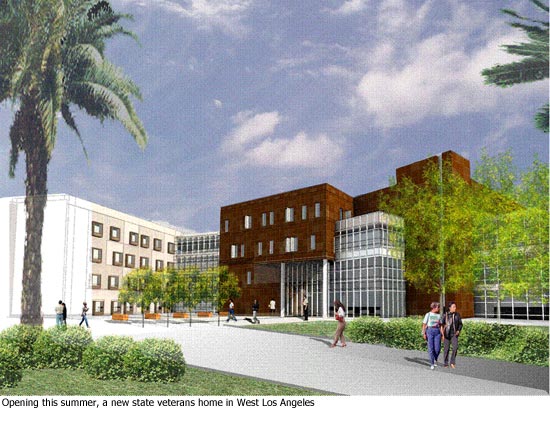
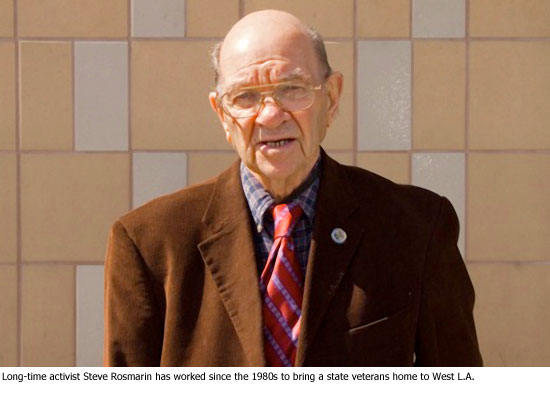





 Check for the latest closure information
Check for the latest closure information








